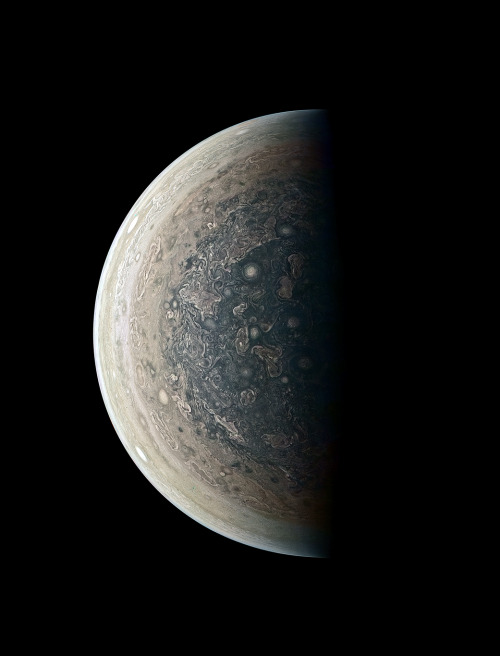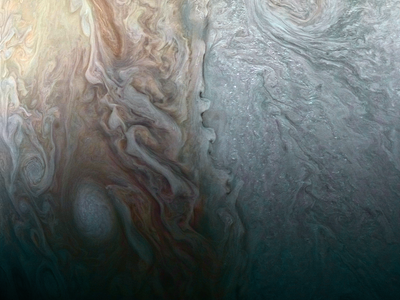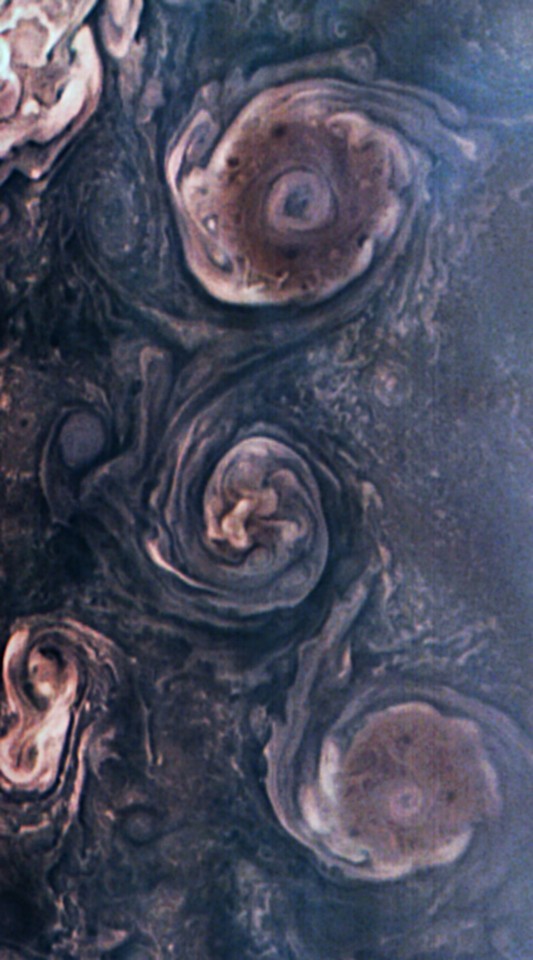Stars, Sea, And Smoke From The ISS: Tournament Earth 2021
Stars, Sea, and Smoke from the ISS: Tournament Earth 2021
We started Tournament Earth with 32 photos taken by astronauts from the Interantional Space Station and now we are down to 8. All of the #1 seeds are gone. Two #8 seeds are dominating their groups. Who will win? Let's take a closer look at the competitors still in the game. Then remember to vote for your favorites. The champion will be announced on April 13, 2021.
Stars in Motion vs. Cleveland Volcano
This matchup pits smoke against stars, but both have interesting stories.

The International Space Station (ISS) is constantly in motion. For astronaut photographers on board, that motion has consequences. For one, it makes it challenging to take photos. The same motion makes it possible to shoot spectacular photos like the one above. The image is compiled from a series of photographs taken by astronaut Don Pettit while he was onboard the ISS in April 2012. This composite was made from more than 72 individual long-exposure photographs taken over several minutes as the ISS traveled over the Caribbean Sea, across South America, and over the South Atlantic Ocean.

Astronaut Jeff Williams was the first to witness activity at the Cleveland Volcano on May 3, 2006. The Cleveland Volcano is one of the most active in the Aleutian Islands, which extend west-southwest from the Alaska mainland. It is a stratovolcano composed of alternating layers of hardened lava, compacted volcanic ash, and volcanic rocks. The event proved to be short-lived; two hours later, the plume had completely detached from the volcano. The ash cloud height could have been as high as 6,000 meters (20,000 feet) above sea level.
Stargazing from the ISS vs. Cruising Past the Aurora Borealis
This is the most stellar matchup of the tournament, literally. Two beloved star pictures face off in what will be one of the most difficult choices of the tournament.

An astronaut took this broad, short-lens photograph of Earth’s night lights while looking out over the remote reaches of the central equatorial Pacific Ocean. The ISS was passing over the island nation of Kiribati at the time, about 2600 kilometers (1,600 miles) south of Hawaii. Scientists identified the pattern of stars in the photo as our Milky Way galaxy (looking toward its center). The dark patches are dense dust clouds in an inner spiral arm of our galaxy; such clouds can block our view of stars toward the center. The curvature of the Earth crosses the center of the image and is illuminated by a variety of airglow layers in orange, green, and red.

Commonly known as the northern lights, these colorful ribbons of light appear to dance in the sky over the planet’s high latitudes, attracting sky chasers and photographers. Astronaut Randy “Komrade” Bresnik shot this photograph on September 15, 2017, as the space station passed over Ontario, Canada. Curtains of green—the most familiar color of auroras—dominate the light show, with hints of purple and red.
Rolling Through the Appalachians vs. Castellanus Cloud Tower

The Susquehanna River cuts through the folds of the Valley-and-Ridge province of the Appalachian Mountains in this photograph taken from the International Space Station by astronaut Christina Koch. The Valley-and-Ridge province is a section of the larger Appalachian Mountain Belt between the Appalachian Plateau and the Blue Ridge physiographic provinces. The northeast-southwest trending ridges are composed of Early Paleozoic sedimentary rocks. The valleys between them were made of softer rocks (limestone and shales) that were more susceptible to erosion; they are now occupied by farms.

An astronaut aboard the International Space Station took this photograph of a massive vertical cloud formation—known to meteorologists as cumulus castellanus—above Andros Island. The cloud name castellanus comes from the similarity to the crenellated towers or turrets of medieval castles. These clouds develop due to strong vertical air movement typically associated with thunderstorms.
Lake Van, Turkey vs. Typhoon Maysak from the Space Station

While orbiting on the International Space Station, astronaut Kate Rubins shot this photograph of part of Lake Van in Turkey, the largest soda or alkaline lake on Earth. Generally, soda lakes are distinguished by high concentrations of carbonate species. Lake Van is an endorheic lake—it has no outlet, so its water disappears by evaporation—with a pH of 10 and high salinity levels.

This photograph of super typhoon Maysak was taken by European Space Agency astronaut Samantha Cristoforetti as the International Space Station passed near the storm on March 31, 2015. The category 4 typhoon was headed for a possible landfall in the Philippines by the end of the week. It was unusual for the western Pacific to see such a strong storm so early in the year.
See all of the images and vote HERE. Follow @NASAEarth on social media for updates.
Make sure to follow us on Tumblr for your regular dose of space: http://nasa.tumblr.com
More Posts from Starry-shores and Others
Isn’t it kind of bananas that for most of human history we’ve been completely oblivious to how utterly environmentally tumultuous the planet has historically been? Before the advent of paleontology, conventional wisdom posited that the earth has more or less looked the same for as long as its been around, but soon enough naturalists like Georges Cuvier came along and said, “well it actually turns out that most of the organisms that have ever existed are actually no longer with us,” thereby introducing the entire concept of extinction to the human race?? Do you realize how coconuts that must have sounded back then?
Not only that, but the more we delved into paleontology the more it became apparent that the Earth has spent so much of its existence (about a billion years) being completely unsuitable and even hostile to life as we know it. A significant stretch of the cosmic timeline classifies our planet as being an oxygen-poor wasteland constantly pounded by asteroids and brimming with active super volcanoes. Even after life on Earth started to stretch out its stubby little amphibious legs we’ve had like five mass extinctions events almost completely fuck it all up (including one known as the Permian extinction which killed off no less than 70% of the planet’s land-based life and 96% of its sea critters). Can you recognize how rare and unlikely it is that out of all the downright catastrophic times any of us could have existed as unfortunate little trilobites or dimetrodons we actually get to exist as humans beings who can learn about this stuff with the help of a scientific discipline that effectively allows us to peer back into the reaches of the past?? Anyway, here’s wonderwall

Demonstration of the 1974 Arecibo message. The radio message, consisting of seven different parts showcasing human technological knowledge, was sent from Earth to star cluster M13, 25,000 light years away.
(In the actual message the different parts aren’t colored.)
From the invention of wireless to Radio Broadcast to Space

The word radio was coined in 1907 after a decade of furious activity to discover the mechanism for wireless transmission. A decade earlier, French physicist Édouard Branly coined the term radioconductor to describe a means of wireless transmission. He based his term on the verb radiate which ultimately came from the Latin word radius meaning the spoke of a wheel, a ray or beam of light. The word radio was first used by itself in a 1907 article by Lee De Forest. It was used five years later by the Navy to distinguish it from other wireless technologies and entered common usage in the next decade. Radio technology advanced so quickly that a little over 50 years later on November 16, 1974, scientists broadcast the first interstellar radio message out to the stars, a program that later became known as METI, the Message to Extra-terrestrial Intelligence. To date, only 9 messages have been transmitted by a variety of organizations:
{The Morse Message (1962)}
Arecibo message (1974)
Cosmic Call 1 (1999)
Teen Age Message (2001)
Cosmic Call 2 (2003)
Across the Universe (2008)
A Message From Earth (2008)
Hello From Earth (2009)
RuBisCo Stars (2009)
Wow! Reply (2012)
The first radio message, known as the Morse Message, does not technically belong on this list as the Russians directed the message to Venus, and thus the primary mission was not Interstellar. The message targets vary in distance from the very short (the majority of targets are under 100 light years away) to the very far, including the Arecibo Message, which targets the M13 globular cluster 24,000 light years away.

While there have been some dissenting voices who argue that ‘revealing’ our location to enemy or hostile alien civilizations is ill-advised at best, most scientific consensus agrees that due to the physical restrictions on speed and travel (as currently understood) we are in no danger of imminent attack. While the Arecibo Message won’t reach its target for another 25,000 years or so, the first of the other messages should arrive by 2029. Other scientist point out that our current terrestrial radio and television broadcasts represent their own METI signal and thus we have no need to fund additional broad- or narrow-cast messages.
Image of the Arecibo Radio Telescope courtesy Marius Strom under a Creative Commons 3.0 share alike license.
Image of the Arecibo Message of 1679 bits in the public domain.
if you think the ocean now is a scary fuck then you haven’t seen the scary fuck that is the prehistoric ocean
so im watching the history channel on youtube (i could tell you so much on short nosed bears rn) but i just finished watching this thing called the mosasaur and its your pretty basic mega water dinosaur, 50 feet long, eel tail, sonar, doesn’t chew its food etc, but then it got dark
these shits were top predators, no competition whatsoever…..except from themselves. the narrator was saying that even though there was nothing to oppose them, they somehow continued to evolve into like fifty 50 different species of this mega predator. And its really cool because it started as a three foot lizard and in just 6 million years it became “the ultimate success story of evolution”.
they had these weird funky teeth too. not only were they really big and strong like you’d expect but they had teeth in the roof of them mouth cuz they’d slide their dinner down their mouth like a conveyer belt. and since their so big you’d think wow how did no one see them? apparently sea creatures are frickin blind or something bc this megabeasty would just lie on the frickin bottom of the ocean and wait for something to swim up. then it would propel its ass up with this snaky tail and just boosh i ated you
but mosasaurs kept evolving even though they were literally the top predator. why is that?? that doesn’t happen in nature. turns out they were causing themselves to evolve. turns out they’re one of the only species (including humans) that naturally commits murder aka kills their own kind. they’ll bite each others heads until they can get a good grip then one of them snaps the neck. and they didn’t even eat the other guy. they did it. for. fun. (apparently they thrive on violence????)
and im over here going like wtf. but then it got worse. these scary ass motherfuckers began to go anywhere they pleased. they evolved even more and then moved into fresh water. like swamps and rivers. thats terrifying. NOTHING On eARth could stop them.
Nothing on Earth ;) aka enter the extinction comet
BUT then I learned that even the bigass dino killing comet didn’t even kill the thing. They literally had to starve to death because all of their prey died out. NOPE not them. THey didn’t die out because they’re like dinosaur gods or some shit. EVERYTHING DIED BUT THEM
gocmnh
It’s Dunkleosteus, the Devonian Destroyer! This specimen was discovered right here in Cleveland.
neohumanity
Grand Prismatic Spring: The most beautiful and dangerous hot spring in the world. Filmed from a helicopter 🚁 Shot on
@lexarmemory
.
-
 thornthallid liked this · 2 years ago
thornthallid liked this · 2 years ago -
 damiminator liked this · 2 years ago
damiminator liked this · 2 years ago -
 bauernbubgay liked this · 3 years ago
bauernbubgay liked this · 3 years ago -
 rh35211 reblogged this · 3 years ago
rh35211 reblogged this · 3 years ago -
 creaturekin liked this · 3 years ago
creaturekin liked this · 3 years ago -
 vluop liked this · 3 years ago
vluop liked this · 3 years ago -
 leidila liked this · 3 years ago
leidila liked this · 3 years ago -
 laura-mv liked this · 3 years ago
laura-mv liked this · 3 years ago -
 afflefieplavour reblogged this · 3 years ago
afflefieplavour reblogged this · 3 years ago -
 reginasknight94 liked this · 3 years ago
reginasknight94 liked this · 3 years ago -
 theofficialdeannawinchester liked this · 3 years ago
theofficialdeannawinchester liked this · 3 years ago -
 su-realism liked this · 3 years ago
su-realism liked this · 3 years ago -
 srikarsama liked this · 3 years ago
srikarsama liked this · 3 years ago -
 srikarsama reblogged this · 3 years ago
srikarsama reblogged this · 3 years ago -
 dracolupus628 reblogged this · 3 years ago
dracolupus628 reblogged this · 3 years ago -
 dracolupus628 liked this · 3 years ago
dracolupus628 liked this · 3 years ago -
 harleydoll liked this · 3 years ago
harleydoll liked this · 3 years ago -
 aearyn reblogged this · 3 years ago
aearyn reblogged this · 3 years ago -
 eagleslee reblogged this · 3 years ago
eagleslee reblogged this · 3 years ago -
 eagleslee liked this · 3 years ago
eagleslee liked this · 3 years ago -
 metalheadtilimdead liked this · 3 years ago
metalheadtilimdead liked this · 3 years ago -
 enntzim reblogged this · 4 years ago
enntzim reblogged this · 4 years ago -
 jasjabberwocky liked this · 4 years ago
jasjabberwocky liked this · 4 years ago -
 serendip8y reblogged this · 4 years ago
serendip8y reblogged this · 4 years ago -
 vividblues liked this · 4 years ago
vividblues liked this · 4 years ago -
 hazelsarahh reblogged this · 4 years ago
hazelsarahh reblogged this · 4 years ago -
 hazelsarahh liked this · 4 years ago
hazelsarahh liked this · 4 years ago -
 candyland20bp1 liked this · 4 years ago
candyland20bp1 liked this · 4 years ago -
 theballadofjohngeorgeandyoko liked this · 4 years ago
theballadofjohngeorgeandyoko liked this · 4 years ago

Amateur astronomer, owns a telescope. This is a side blog to satiate my science-y cravings! I haven't yet mustered the courage to put up my personal astro-stuff here. Main blog : @an-abyss-called-life
212 posts










